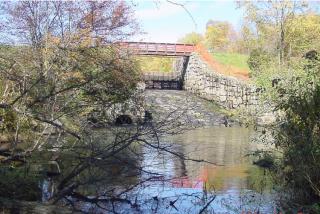Infrastructure - Dams

Over 3000 dams are located on national forests and grasslands. The Forest Service operates and maintains approximately 1500 of these dams for which the agency accepts legal ownership on behalf of the public trust. The remaining dams are owned by entities such as other Federal, state, and local government agencies, public utilities, and private parties. These dams are operated under Special Use Permit or other authorities.
Dams on Forest Service land serve urban and rural communities, including many underserved areas and populations. The primary benefit of approximately 50 percent of all dams operated and maintained by the Forest Service is recreation and/or wildlife management. Other uses include fire protection, irrigation, flood control, water supply and hydroelectric.
Approximately 460 of the dams operated and maintained by the Forest Service are considered jurisdictional dams (meaning they are subject to regulatory oversight) and, therefore, meet the requirements of the National Inventory of Dams, which is maintained by the U.S. Army Corps of Engineers. These dams are assigned a hazard classification of high, significant, or low. Over 80 Forest Service dams are assigned as high hazard classification dams, which means failure of the dam will probably cause loss of human life. Hazard classification is not based on the condition or structural deficiencies of a dam but the downstream risk to the public, infrastructure, and the environment.
Although the Forest Service works closely with other federal agencies, state, local and tribal governments to ensure the safety of dams located on national forests and grasslands, it is important for the public to adhere to safety recommendations when recreating near dams.
Know before you go:
Visitors are responsible for their own safety and need to be aware of dam locations and what to do in the event of a dam malfunction/mis-operation or flash flooding.
Know what is upstream from where you are camping or hiking.
Know your area’s flood risks and weather hazard bulletins by visiting weather.gov or your local news stations.
Families should discuss how they would alert each other and know where safe zones are located if rushing or rising water, or any other emergency occurs.
Stay Alert:
Follow the guidance on posted signs around the reservoirs and dams.
Stay aware of weather conditions that can contribute to rising or rough waters.
Stay alert for signs of heavy rain with thunder and lightning where you are and how the weather is upstream. Be prepared to get to higher ground before flooding happens.
Do not swim, boat or float near a dam or spillway. Avoid dam spillways during high water.

Infrastructure Investment and Jobs Act and Dams
The Infrastructure Investment and Jobs Act has provided funding for the removal of non-hydropower Federal dams. Decommissioning projects are focused on full or partial removal of dams and projects that reduce deferred maintenance.
